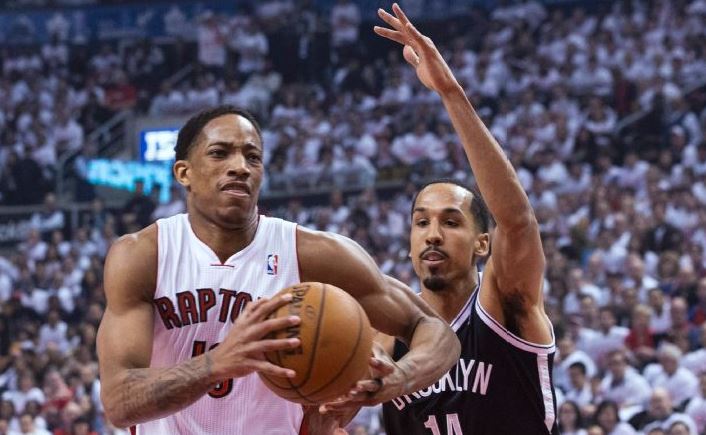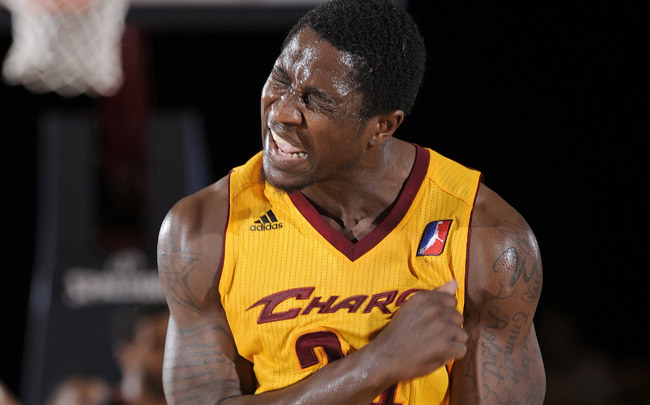Here I am waiting in the lobby as my car’s getting an oil change and I remember that I got to write something for this Wednesday. If it weren’t severely off-topic, I would write, in great detail, about how the early-30s salesman is hitting on the young cashier without success. He’ll probably go home still thinking about her, whereas she’ll be out with her 20-something friends at a Boston Pizza in the suburbs “living it up” and Instagramming the whole experience, filters intact and the camera angles tailored to hide her lesser features. Maybe I’m too quick to dismiss the feasibility or the potential of this union – maybe she should pause and cater to the advances made, and contemplate what, in the grand scheme of things, this chap has to offer. A steady income at the very least, maybe even a house, and most certainly a car. Something to think about, though he’s likely married.
Back to basketball and I’ve got to thinking about driving the ball. On observation alone you are likely to make a case that DeMar DeRozan and Kyle Lowry are the two main drivers of the ball on the Raptors. You would be right as DeRozan ranks 20th in the league in drives per game at 7.2 and Lowry sits at 35 with 6.2 drives per game. A drive here is defined as “any touch that starts at least 20 feet of the hoop and is dribbled within 10 feet of the hoop and excludes fast breaks”. Not surprisingly, Ty Lawson, Tony Parker, and Monta Ellis are the top drivers of the ball in the NBA. That’s all well and good, but what is the effectiveness of those drives? If you look at how many points their respective teams get from their drives, the same three lead the pack again. OK, so these players drive a lot and their teams reap the benefits. Simplistic stuff.
Where things get interesting from a Raptors perspective is when we consider points per drive, i.e., irrespective of how many drives a player makes, how many points per drive does their team get out of it? Among players who drive more than five times a game, Lowry ranks fourth in the NBA getting his team 1.27 points per drive. That’s only behind Kevin Durant (1.45), LeBron James (1.32) and James Harden (1.29). This, at the very least, indicates that Lowry driving the ball is hugely beneficial to the unit. The difference between him and, Durant and James is that when the latter two drive, they tend to finish at the rim at a much higher percentage than Lowry (Lowry is at 50%, whereas Durant and James are at 59% and 64%, respectively). That’s acceptable because Lowry is a smaller player who will look to pass more often than try to finish among the trees.
DeRozan is 12th at 1.22 points per drive. DeRozan, on average, drives one more time than Lowry and has a lesser yield. Why? Partially because he shoots 48.7% on drives which is slightly lower than Lowry’s 50%. You might have also surmised that this is because he doesn’t pass well out of drive situations. Assists alone aren’t a good indicator of a player’s effectiveness in these situations because in most cases the defense makes the initial rotation, and it’s the second rotation they fall short on, which is what the “secondary assists per game” stat tell us (basically, a hockey assist). Kyle Lowry is at 1.5 hockey assists per game (18th) whereas DeRozan is at 0.8 (86th). Keep in mind that it’s awfully difficult for shooting guard’s to keep this stat high, for instance, the first non-PG to appear on the list is Gordon Hayward at 27th, followed by LeBron James at 28th , both at 1.3.
In the absence of a statistic correlating drives with hockey assists, if we focus on this aspect of the offense, i.e., what DeRozan does after he drives, it may be a constraint we can exploit to good effect. DeRozan is already excellent at getting himself to the paint, it’s what he does next, or what the court setup allows him to do next, that can be examined here. I found that when he got to the lane, he often had one outcome in mind: getting to the FT line. It’s a solid strategy and it carried the Raptors last year as he averaged a 8 FTs which was good for 7th in the NBA. To elevate his game, though, Dwane Casey has to structure the court in a way that there are multiple outcomes on his drives and that they don’t do or die solely on the basis of him getting to the FT line.
Adding a slasher like James Johnson will help in this regard because he provides a moving option on the court, which is what Landry Fields was supposed to be. Throwing Lou Williams into the mix should also help in terms of court-spacing and a full year with Patrick Patterson – excellent at presenting himself – should help in this matter. What the Raptors have here is a great weapon that attracts and collapses a defense. Last year I thought the Raptors did the bare minimum in taking advantage of such a skill, and next season they have to make this a focal point because as DeRozan gets stronger and gains more experience, his ability to attract defenders will only improve. It’s what he does next that’ll heavily influence the Raptors offense.



